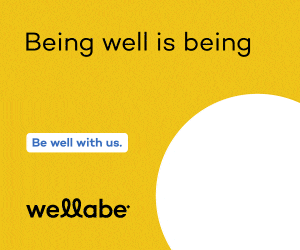Investors, meet Roth (k)

Though companies can’t offer the new Roth 401(k) retirement plan option to their employees until Jan. 1, the time to prepare is now, say benefits experts.
“I think the key challenge for employers will be providing information to employees to discuss the new options with them,” said Chris Bowman, vice president for retirement and investor services with Principal Financial Group Inc. The Des Moines-based financial services company is among the top retirement plan administrators in the country.
“There will be a lot of interest in Roth (k),” Bowman said. “If you really want to boil it down to its essence, Roth (k) allows investors to choose the tax treatment of their retirement savings.”
According to a recent survey of employers by Employee Benefits News, 13 percent of respondents said they plan to offer a Roth 401(k) next year, while 32 percent said they are considering it. Forty-eight percent of the companies polled said they do not plan to offer a Roth next year.
Congress authorized Roth 401(k) plans four years ago through the Economic Growth and Tax Relief Reconciliation Act of 2001, which includes a provision allowing qualified 401(k) plans and 403(b) plans to permit participants to designate some or all of their contributions as “Roth contributions” for plan years beginning in 2006 or later. The act has a sunset provision that automatically ends the program at the end of 2010 unless Congress extends it.
Unlike a traditional 401(k) defined contribution plan, in which employees set aside pre-tax dollars that accumulate earnings tax-free until the person retires, employees would invest after-tax dollars in a Roth 401(k), paying taxes on the annual contributions at their current tax rates in return for the ability to withdraw the money tax-free when they reach retirement age.
According to Retirement Resources Inc., at the end of 2004 there were nearly 450,000 401(k) plans offered by employers, covering nearly 53 million workers and totaling $2.85 billion in assets. Individuals will be able to make the same maximum contributions allowable under 401(k) rules into a Roth 401(k). For 2006, employees under age 50 can save up to $15,000, and employees 50 and can put away up to $20,000 per year.
In Bowman’s estimation, fewer than half of employees who now pay into a 401(k) plan will choose to switch to a Roth.
“It really boils down to your effective tax rate when you’re employed and when you’re retired,” he said. “For most people, they’re probably going to have less money in retirement, so the traditional 401(k) is probably the best for them.”
However, those who speculate the federal government will raise income tax rates in future years to make up for budget deficits may hedge their bets by choosing the Roth, or by putting some funds into both types of plan..
Because a Roth 401(k) has a much higher ceiling on annual contributions than the Roth IRA — $15,000 per year for employees younger than 50 compared with $4,000 for the Roth IRA – it will provide quicker route to socking away more after-tax dollars, said Jean Duffy, vice president of financial services with Holmes Murphy & Associates Inc.
Additionally, Roth 401(k) contributions won’t be subject to the income limitations that apply to Roth IRA eligibility. Currently, individual filers with a modified gross adjusted income of more than $95,000 and joint filers with income of more than $160,000 can’t contribute to a Roth IRA. That difference can make the Roth 401(k) a good option for high-salary employees, she said.
“We have already received a number of calls from our employers who are excited about encouraging their people to save more for retirement,” Duffy said. “I’ve probably had calls from a half-dozen employers already who have wanted more information.”
Employers who plan to offer a Roth 401(k) option will first need to amend their benefits plan document, an action that Holmes Murphy has already notified its clients to take, she said.
“We take a very proactive approach, so if they’re interested in adding it we’ll walk them through the process,” she said.
Among the caveats for business owners, Duffy said, “is that just because it has the name Roth on it and it’s tax-free at the end doesn’t necessarily make (the Roth 401(k)) better.” Also, “it adds some extra administrative work for employers because there will have to be the distinction kept between the two, and there needs to be the education component to make sure employees understand the difference.”
A new report on the Roth 401(k) option for plan sponsors prepared by Holmes Murphy & Associates Inc. can be obtained by calling Jean Duffy at Holmes Murphy, 223-6800, or by e-mailing her at jduffy@holmesmurphy.com.







